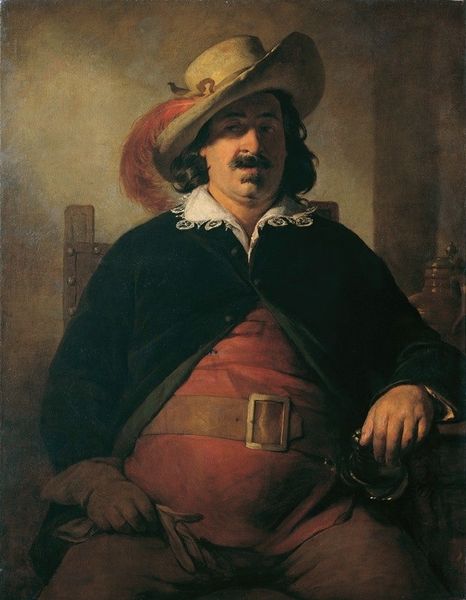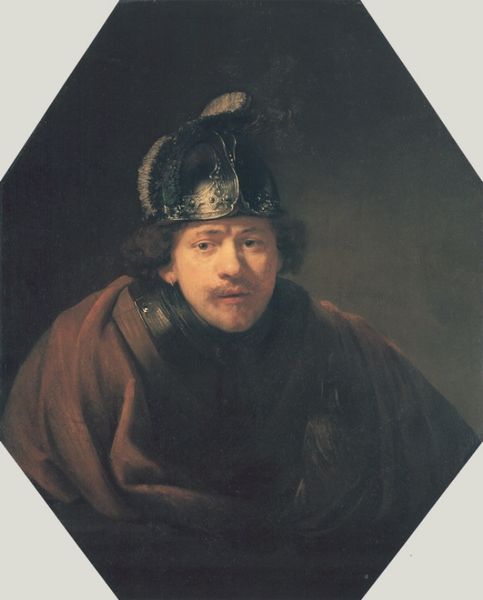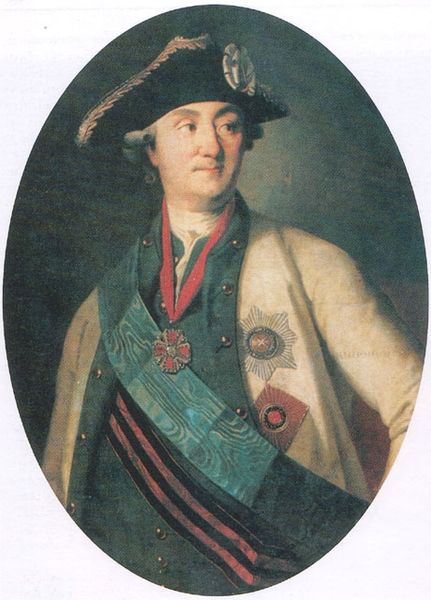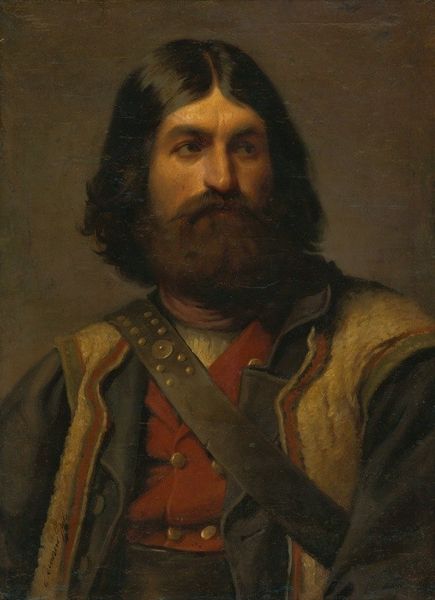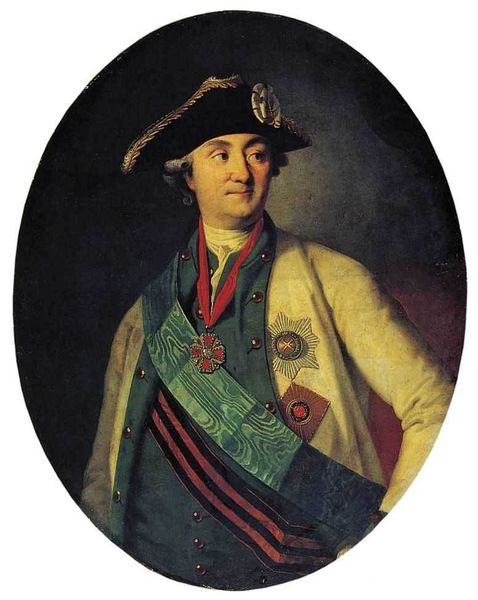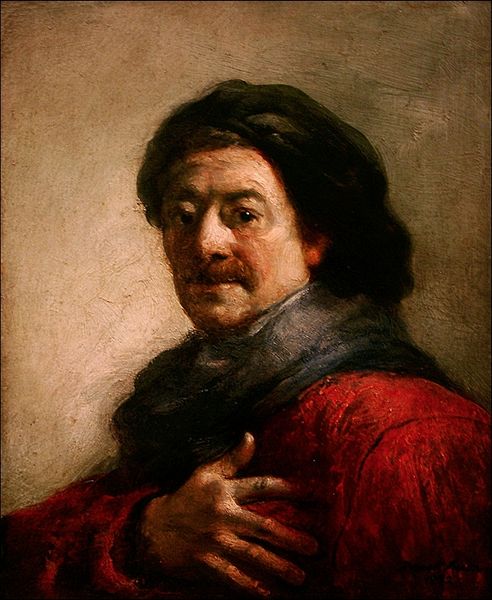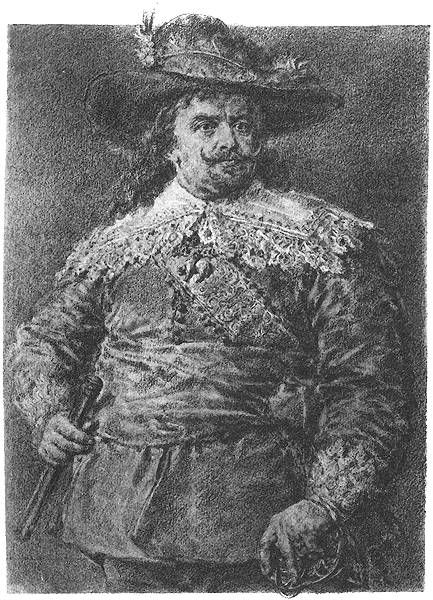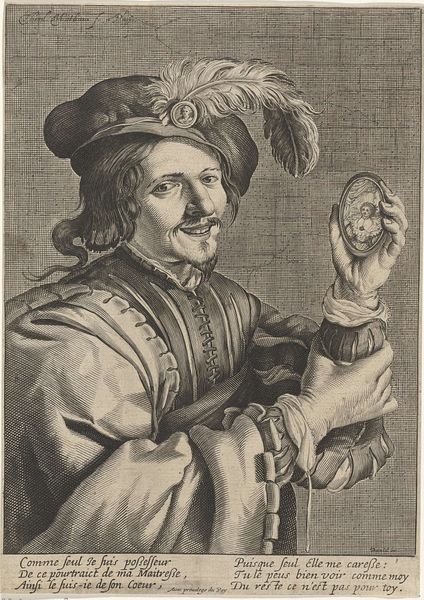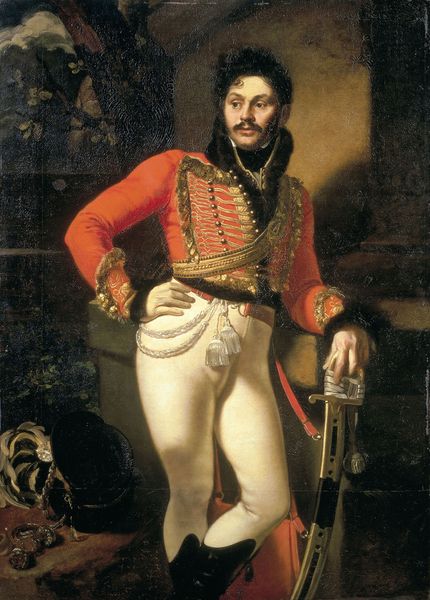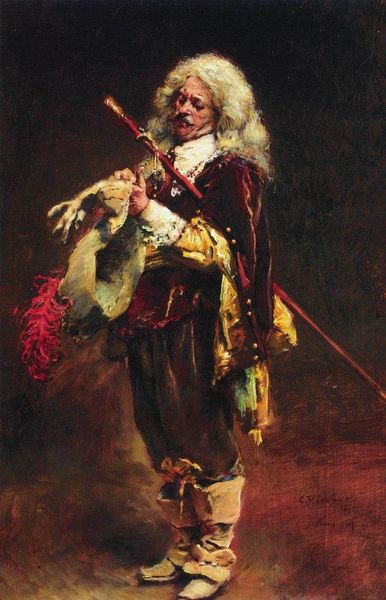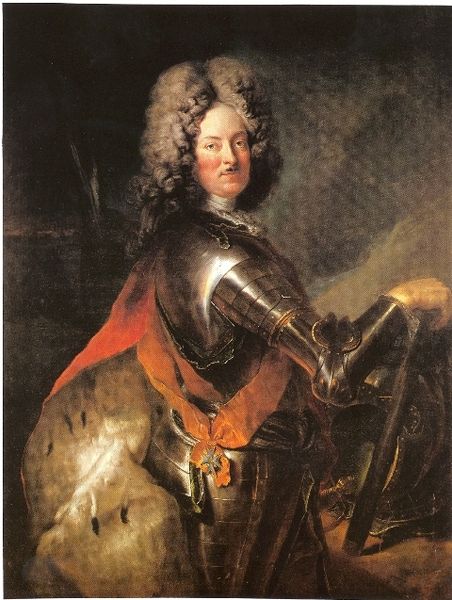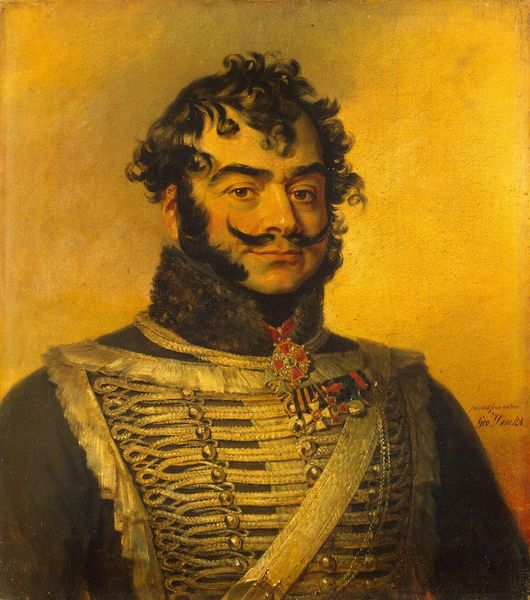
oil-paint
#
portrait
#
baroque
#
oil-paint
#
figuration
#
oil painting
#
history-painting
Dimensions: 40 x 29 cm
Copyright: Public domain
Curator: Well, isn’t this an intriguing study? Here we have Rembrandt van Rijn’s "A Warrior," dating back to 1627, currently held in a private collection. It’s oil on canvas. Editor: There's a certain weightiness about it, isn't there? The somber color palette and stern facial expression lend a gravitas to the figure. He seems... burdened. Curator: It is precisely this balance of light and shadow, the stark chiaroscuro, which emphasizes the textures—the feathered hat, the polished gorget—making them practically palpable. Consider, too, how the composition is guided by diagonals to enhance dynamism. Editor: I’m drawn to the sociopolitical implications. Rembrandt was painting this during a period of relative peace in the Dutch Republic. Is this warrior a nostalgic figure, perhaps romanticized from a past conflict? Or perhaps he is an expression of power during a mercantile golden age? Curator: A relevant point. And yet, the formal qualities remain paramount. Notice how Rembrandt masterfully uses impasto to build up layers of paint. Observe how it catches the light, drawing our gaze to certain areas while other details are more subtle in tonality. Editor: It’s undeniable that Rembrandt was exceptionally talented. How does this figure conform to or depart from notions of heroism prevalent at the time, particularly when the Dutch Republic defined itself against external powers? Curator: Intriguing. To explore this notion in line with semiotics, we may consider that the feather hat is meant to amplify notions of military nobility. But more critically, the treatment of light draws you, guiding your view—inviting an analytical deconstruction of space and depth! Editor: To move forward from such formality, it makes me reflect on how society impacts not only artistic representations but their viewing conditions as well. Knowing more context may allow one to appreciate nuances and social nuances! Curator: True. Art serves diverse purposes! Nonetheless, a concentrated encounter and contemplation regarding color, texture, form, structure remains essential. Editor: Ultimately, I suppose both approaches provide richer avenues to engage this commanding representation of Dutch historical identity and artistic finesse.
Comments
No comments
Be the first to comment and join the conversation on the ultimate creative platform.
